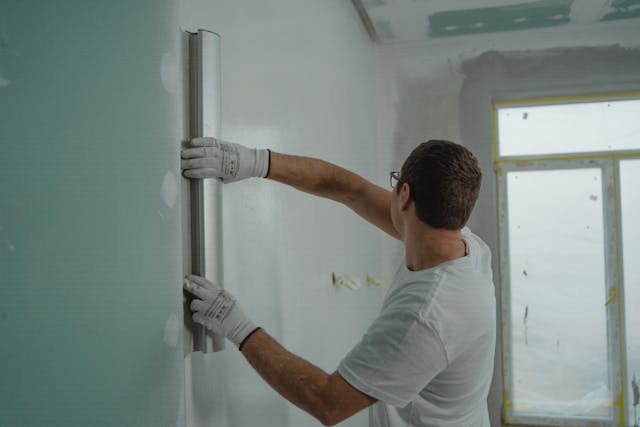Your log home requires regular maintenance and restoration to support its structural integrity. Weather exposure, moisture buildup, and pest damage can interfere with your log home. Partnering with a home restoration and repair company helps you maintain your investment, points out Peabody Residential, a Fairfax real estate property management firm. Here are a few techniques used in log home restoration:
Log Damage Evaluation
A key step in log home restoration is evaluating the extent of damage to your home. Your restoration team inspects the logs for rot, insect infestations, and water damage. They also check for cracks in the wood that may affect several logs.
During the evaluation, your restoration team also looks for signs of structural damage. This may include sagging or uneven logs, which could indicate a problem with the foundation. The accurate identification of structural damage informs the restoration process. It helps determine which logs need to be replaced and which ones can be repaired. Probing logs with a sharp tool helps identify areas of decay or rot that may not be visible on the surface. A comprehensive evaluation gives repair specialists a better idea of the repair timeline and the steps that may be required.
Log Replacement Process
A key component of log home restoration is replacing damaged logs. The visual consistency and structural integrity of the logs are beneficial for the aesthetics and longevity of the home. Logs with severe rot, excessive insect damage, or in-depth structural issues will require replacement.
The restoration and repair company starts by cutting the logs into specific lengths. The length of the log depends on the extent of damage to allow for trimming or adjustments. They remove the damaged logs to make room for the new ones. The reintegration of new logs requires the creation of notches and grooves to fit in with the existing logs.
You can choose to leave the logs in their natural shape or have them trimmed. A log home restoration team factors in the species, age, and condition of the wood before starting the replacement process. This allows them to get the most precise match possible.
Log Refacing Methods
One technique that your log home restoration team might employ is the log refacing method. For this method, the current log surface remains, and the team adds a new layer of wood on top. One main advantage of this method is that you don’t have to remove and replace the original logs. This technique is beneficial if you are trying to maintain the original appearance of your home.
Engaging a professional team provides accurate sealing of the logs to prevent any moisture from seeping through. You can also choose to redesign the exterior by adding different types of wood. The minimal disruption allows you to save time when you are refurbishing your log home. This process is ideal if you don’t want to move out of your property during the renovations.
- Log Gap Sealing
Chinking and sealing are other methods to help when restoring your log home. Chinking involves filling the gaps between logs with a sealant. You can choose from a variety of materials for chinking, and the type of product you use will depend on your personal preference and the style of your log home.
Sealing is when you cover the entire exterior of your log home with a sealant. This helps protect the wood from weather damage and can also improve energy efficiency by preventing drafts. You could also opt for a combination of chinking and sealing for maximum protection and durability. Your log restorers keep in mind the location of your home and its exposure to weather elements. The type of sealant you choose will depend on your climate and the types of weather your log home will be exposed to. Schedule visits with log repair specialists to have your home sealed regularly, as this helps maintain the aesthetic appeal of your space.
Invest in Log Home Restoration
Partnering with a reputable log home restoration company can help with structural repairs. You benefit from experienced professionals who know how to identify and fix any issues with your log home. The quality workmanship and materials used in restoration can improve the aesthetic appeal. Schedule a consultation with a log home restoration expert to assess the current condition and provide repairs or improvements.







